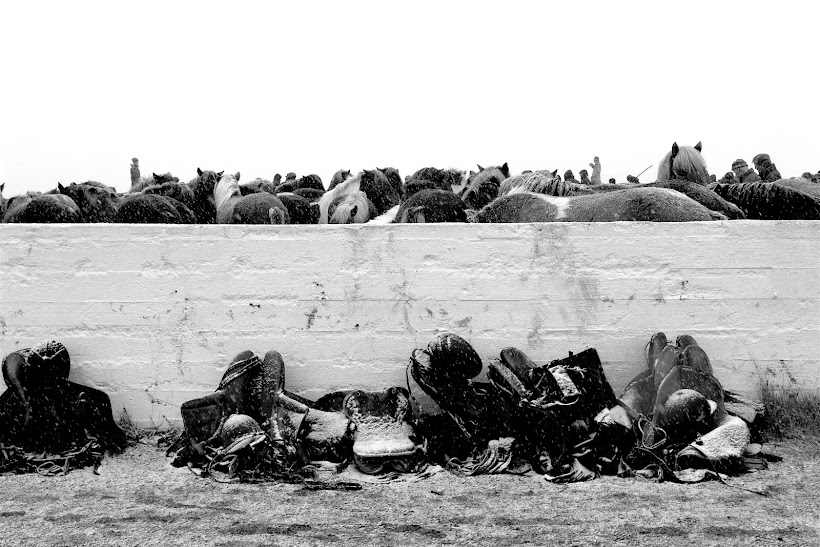Equine welfare is measured by the amount of medication and veterinary care horses require in their given situation. The more medication and veterinary services required for a stable or discipline, the poorer the welfare situation is for the horses. Inadequate husbandry creates the need for medication. The more medication required, the poorer the equine welfare.
Properly cared for and stabled horses seldom need veterinary attention and require very few if any drugs to maintain their health and performance aspirations. American racehorses would be better served by providing more appropriate horse-friendly care rather than continued injections of raceday drugs. Permissive drug programs create substandard care. The massive amounts of Lasix, cortisone, and NSAIDs administered to American racehorses is reflective of the poor welfare standards the industry allows. Permissive drug programs perpetuate substandard care. As well, the breakdown and unsoundness so prevalent in American horseracing are directly proportional to the amount of veterinary services (drugs administered and injected) horses receive. The more drugs horses receive the more they breakdown. Heavy use of drugs reflects poor welfare. American racehorses are poorly cared for as reflected by the drugs trainers claim the horses require.
Thoroughbred welfare is the issue that needs addressed. American racehorses need better care. A high incidence of EIPH is reflective of substandard care. Racehorses need much more locomotion and out of stall activities than they presently receive. Abundant locomotion enhances soundness of wind and limb. Horses require several hours of afternoon activities each day to promote and sustain health of limb and wind including hand walking and grazing, lungeing, hill and dale conditioning, measured turnout, pasturing, massage, passive flexion, swimming, play, and variety of other activities that keep them moving.
Dr Gustafson is an equine veterinarian, veterinary behaviorist, and novelist. Applied veterinary behavior enhances optimum health, performance, soundness, contentment, and longevity in animal athletes. Natural approaches to development, training, nutrition, and conditioning sustain equine health and enhance performance. Behavioral and nutritional enrichment strategies enhance the lives of stabled horses. Training and husbandry from the horse's perspective result in content, cooperative horses. DrSid provides equine behavior consultations to help recreate the needs and preferences of horses in training and competition.
Properly cared for and stabled horses seldom need veterinary attention and require very few if any drugs to maintain their health and performance aspirations. American racehorses would be better served by providing more appropriate horse-friendly care rather than continued injections of raceday drugs. Permissive drug programs create substandard care. The massive amounts of Lasix, cortisone, and NSAIDs administered to American racehorses is reflective of the poor welfare standards the industry allows. Permissive drug programs perpetuate substandard care. As well, the breakdown and unsoundness so prevalent in American horseracing are directly proportional to the amount of veterinary services (drugs administered and injected) horses receive. The more drugs horses receive the more they breakdown. Heavy use of drugs reflects poor welfare. American racehorses are poorly cared for as reflected by the drugs trainers claim the horses require.
Thoroughbred welfare is the issue that needs addressed. American racehorses need better care. A high incidence of EIPH is reflective of substandard care. Racehorses need much more locomotion and out of stall activities than they presently receive. Abundant locomotion enhances soundness of wind and limb. Horses require several hours of afternoon activities each day to promote and sustain health of limb and wind including hand walking and grazing, lungeing, hill and dale conditioning, measured turnout, pasturing, massage, passive flexion, swimming, play, and variety of other activities that keep them moving.
Dr Gustafson is an equine veterinarian, veterinary behaviorist, and novelist. Applied veterinary behavior enhances optimum health, performance, soundness, contentment, and longevity in animal athletes. Natural approaches to development, training, nutrition, and conditioning sustain equine health and enhance performance. Behavioral and nutritional enrichment strategies enhance the lives of stabled horses. Training and husbandry from the horse's perspective result in content, cooperative horses. DrSid provides equine behavior consultations to help recreate the needs and preferences of horses in training and competition.
